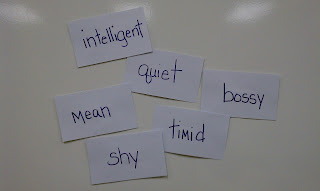Reading/ Comprehension of Literary Text/ Fiction Students understand, make inferences, draw conclusions about the structure and elements of fiction and provide evidence from text to support their understanding | |||||
K | 1 | 2 | 3 | 4 | 5 |
8(B) describe main characters in the story and the reasons for their actions | 9(B) describe main characters in the story and the reasons for their actions and feelings | 9(B) describe main characters in works of fiction, including their traits, motivations, and feelings | Describe the interaction of characters including their relationships and the changes they undergo Third 8(B) Fourth 6(B) | Explain the roles and functions of characters in various plots, including relationships and conflicts | |
describe main characters in works of fiction describe main characters in works of fiction, including their traits describe main characters in works of fiction, including their motivations describe main characters in works of fiction, including their feelings | |||||
Activities:
TRAITS: character traits/personality traits
- Google Character Traits and you will find endless lists of traits for you to reference.
- Read Aloud Think Together
- Create a Bubble Map of a character's personality traits. To encourage the students to begin supporting their conclusions with evidence you can.......write personality trait on the bubble and provide evidence from the text behind the bubble (see pictures)
- Provide a set of traits that describe a few characters in the book. Ask the students to sort those traits and tell which character they describe
FEELINGS/EMOTIONS:
- You can find the emotion cards in your First Class. Curr. & Inst - Elementary Langusge Arts - Curriculum - Fluency Activities - Character Traits (some are traits but most are feelings)
- Create a Bubble Map (if a character experiences several feelings in one text) of a character's feelings. To encourage the students to begin supporting their conclusions with evidence you can.......write feeling on the bubble and provide evidence from the text behind the bubble (see pictures)
- Create an ongoing Tree Map of feelings including 4 basic emotions ( see pictures). As you read together and you discover new words add them to the chart. You can also discuss the degree of the emotion. For example: annoyed and furious fall under mad, but the degree of anger is very different. This will help the students be more articulate with their writing, explanations and understand more in their reading.
- happy
- sad
- mad
- scared

MOTIVATIONS: describe the event that made the character feel a certain way
Anchor Activities:
Possible Test Questions:



No comments:
Post a Comment